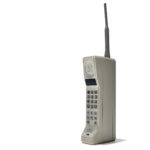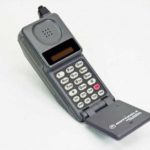From Pigeons to Smartphones: How Far We’ve Come
In 776BC, pigeons signaled the announcement of an Olympic award. Even further back, in 1200BC, fire was used in the Greek city of Troy to warn citizens of attack.
In 1608 the telescope was invented so traveling ships could recognize flags across the water.
What do all these things have in common? They’re forms of communication!
No matter how ineffective or taxing these systems seem to us now, each step building connectivity has led to today’s reality.
“So, what is telecommunications anyway?”
The Dictionary defines telecommunications as information being processed over a great distance through a means of communication.
According to telcomhistory.org, the appearance of the telephone was as impactful in the 20th century as the Industrial Revolution was to the 19th century.
Their website gives a comprehensive list of the events leading up to the communication we experience now, including Morse code and the telegraph in 1844, and 1915 when the first coast-to-coast call was successfully made.
In 1973 the mobile phone was created. The first flip phone was revealed in 1989 targeting the wealthy – costing upwards of $3,000! For a chunky flip phone!
Here’s what they looked like:


Communication avenues today come through computers, email, the Internet, voice-activation, wireless phones, streaming and T.V. It wasn’t until 1998 that the Internet came into the picture.
Cable offerings began in the 1940s-1950s, and by ’62, there were over 900,000 subscribers throughout remote areas in the States, according to the National Academics Press.
The Rural Broadband Association found that there were over 3,200 rural telephone systems by 1912, which grew to more than 6,000 in 1927.
The American government has also dedicated to providing avenues of communication across geographic boundaries. The New Deal in the 1930s made nation and worldwide connection possible. Low-income loans were granted for rural communities in 1949, and Congress passed the Telecommunications Act in 1996 to continue improving connection among disadvantaged areas.
“Okay . . . so how is Endeavor contributing to the growing need for telecommunications?”
Endeavor is committed to meeting the needs in our local communities. At-home Internet access in rural America can be difficult to find at affordable rates. From our foundation we’ve been intentional to take every aspect into consideration in achieving this for our members.
We care deeply about extending opportunities for our citizens to experience the best possible internet connection to make the most of every day. In today’s society, it is increasingly difficult to be productive and updated without quality WiFi or data.
Want to know more about our services? Call us today at 1.800.922.6677 or email customer.service@weendeavor.com to get started!
